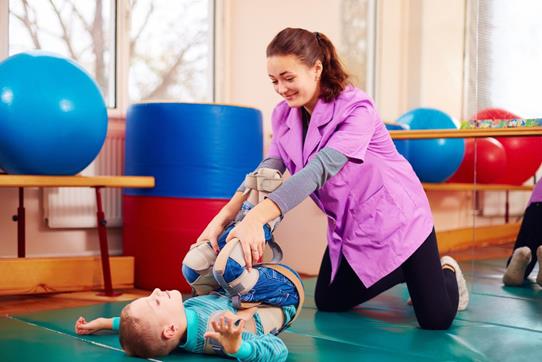There’s only one simple answer to the question of what it takes to take care of a child with cerebral palsy: patience. As the condition may present with a wide range of physical impairments and different levels of severity, there are myriad approaches to preparing a child with cerebral palsy to reach his or her full potential, and to achieve embrace some degree of independence and quality of life. However, most of these will involve a sequence of incremental steps requiring time and focus, so patience is paramount.
What are the symptoms of Cerebral Palsy?
In most cases, impaired motor function is the biggest obstacle facing a child with cerebral palsy. The physical disorder is often classified as being spastic, ataxic, or dyskinetic, and frequently a mix of two or more types. Spastic cerebral palsy is the most common, characterized by stiff muscles and difficulty controlling movement. Dyskinetic (or athetoid) cerebral palsy is denoted by involuntary movements or spasms. Ataxic cerebral palsy is indicated by balance and depth perception issues.
These conditions may present in children at an early age, manifesting as difficulties with eating and drinking, speech, mobility, and personal care. Treatment most often includes physical therapy, occupational therapy, and speech therapy, some of which may be reinforced by medical and orthotic devices.
Helping your child with Cerebral Palsy
Caring for a child with cerebral palsy can be taxing and frustrating. Children with cerebral palsy will take longer to develop the ability to walk, feed, or clean themselves, and in some cases may never achieve full independence in one or all of these areas. In any case, the goal is to maximize a child’s ability and minimize frustration. In most cases, speech, physical, and occupational therapy may prove crucial first steps in helping both caregiver and child alleviate some of the challenges of cerebral palsy.
Speech therapy for children with Cerebral Palsy
Speech therapy focuses on helping children communicate, and also to attain greater control over their mouth and tongue. Some children may experience difficulty chewing and swallowing, so speech therapy will focus on practicing jaw, tongue, and throat muscles. As the name suggests, speech therapy is also indicated to help children develop techniques to better enunciate, or to speak altogether. Improved communication can prove indispensable in practicing other modes of therapy as well.
Physical therapy for children with Cerebral Palsy
The goal of physical therapy is to seek improved strength, flexibility, and balance. Because cerebral palsy often creates a muscular imbalance, with some muscles perpetually stiffening up while others remain loose, physical therapy will include exercises aimed at rectifying the muscular tensions that may impact mobility and posture.
Occupational therapy for children with Cerebral Palsy
Occupational therapy may prove indispensable in helping a child develop fine motor skills. This may be as simple as the ability to grasp objects or operate an electric wheelchair and may escalate by degrees to the point a high functioning child may learn how to feed, wash, and even him- or herself.
While such therapeutic approaches may work wonders for both caregiver and child, and even foster psychological and emotional growth, cerebral palsy is and will be a challenging condition. Consequently, great improvement will not be seen overnight, but with patience and practice, children with cerebral palsy can learn a wide array of skills that may stay with them for their entire lives.

